Metal
Metal is a type of material that is typically hard, shiny, and malleable. It is a good conductor of heat and electricity, and it often has a high melting point. Metals are found in nature and are also produced through various industrial processes.
Physical Properties of Metals
- Shiny: Most metals have a shiny appearance when freshly polished.
- Conductivity: Metals are good conductors of heat and electricity.
- Malleability: Metals can be hammered or pressed into different shapes without breaking.
- Ductility: Metals can be drawn into thin wires without breaking.
- High Melting Point: Most metals have high melting points, which make them suitable for high-temperature applications.
Chemical Properties of Metals
- Corrosion: Many metals can corrode when exposed to air and moisture, forming oxides or other compounds.
- Reaction with Acids: Some metals react with acids to produce hydrogen gas and a salt.
- Alloys: Metals can be combined with other elements to form alloys with improved properties.
Common Metals
Some common metals include:
Uses of Metals
Metals have a wide range of uses in various industries, including:
- Construction
- Transportation
- Electronics
- Medicine
- Energy production
Study Guide
When studying metals, it's important to understand their physical and chemical properties, common types, and uses in different fields. Here are some key points to focus on:
- Describe the physical properties of metals and provide examples.
- Explain the chemical properties of metals, including their reactivity with acids and tendency to corrode.
- Identify common metals and discuss their uses in everyday life and industry.
- Explore the concept of alloys and how they improve the properties of pure metals.
- Discuss the importance of recycling metals and its impact on the environment.
Understanding the properties and uses of metals is essential for various scientific and industrial applications. By mastering this topic, you will gain a deeper appreciation for the role of metals in our daily lives.
.◂Science Worksheets and Study Guides Second Grade. The sun and earth
Study Guide The sun and earth
The sun and earth  Activity Lesson
Activity Lesson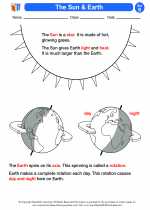 The Sun & Earth
The Sun & Earth  Worksheet/Answer key
Worksheet/Answer key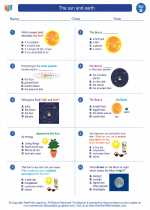 The sun and earth
The sun and earth  Worksheet/Answer key
Worksheet/Answer key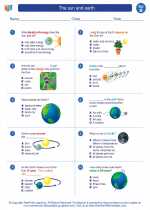 The sun and earth
The sun and earth  Worksheet/Answer key
Worksheet/Answer key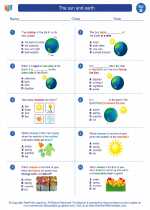 The sun and earth
The sun and earth  Worksheet/Answer key
Worksheet/Answer key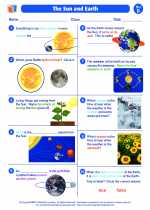 The Sun and Earth
The Sun and Earth  Vocabulary/Answer key
Vocabulary/Answer key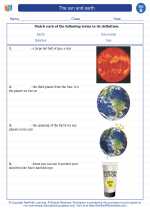 The sun and earth
The sun and earth 

 Activity Lesson
Activity Lesson
 Worksheet/Answer key
Worksheet/Answer key
 Worksheet/Answer key
Worksheet/Answer key
 Worksheet/Answer key
Worksheet/Answer key
 Worksheet/Answer key
Worksheet/Answer key
 Vocabulary/Answer key
Vocabulary/Answer key

The resources above cover the following skills:
Concepts of Earth Science: A student should understand and be able to apply the concepts, processes, theories, models, evidence, and systems of earth and space sciences. A student who meets the content standard should:
Develop an understanding of the cyclical changes controlled by energy from the sun and by Earth's position and motion in our solar system.